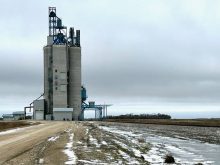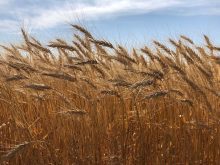Glacier FarmMedia — Hot and dry growing conditions cut into barley yields in Western Canada in 2023 but the quality was generally good, according to the yearly annual harvest report on barley quality from the Canadian Grain Commission (CGC).
Total barley production across the Prairies was down by 10 per cent on the year, at 8.707 million tonnes, according to the CGC. Average barley yields were placed at 61.3 bushels per acre in Western Canada, which was down from 70.5 bu./ac. the previous year and the 10-year average of 66.4 bu./ac.
Read Also

U.S. livestock: Hogs rise ahead of ‘Hogs and Pigs’ report
Chicago cattle futures continued to inch upward on Monday. Hogs also rose in anticipation of Tuesday’s Hogs and Pigs report….
AAC Synergy was the most popular malting barley variety seeded in Western Canada, while the area seeded with CDC Copeland continued to decline. The popularity of newer varieties, such as AAC Connect, CDC Fraser and CDC Churchill, increased noticeably, according to the CGC.
The malting barley was generally of good quality, with average protein levels steady on the year at 12.3 per cent. That compares with the 10-year average of 11.9 per cent.
The average test weight was 65.0 kg/hL, which was lower than the previous year’s average (66.7 kg/hL) and the 10-year average (66.9 kg/hL). The average 1,000 kernel weight was 46.8g, which is higher than last year’s average (45.0g) and the 10-year average (45.7g).
The newer varieties, such as AAC Connect, AAC Synergy, CDC Fraser and CDC Churchill that have kernels larger than AC Metcalfe and CDC Copeland, contributed to the overall high average kernel weight.
Soil moisture and precipitation were lacking in many areas through the growing season but a stretch of relatively cooler temperatures during a portion of July helped relieve some crop stress, as did haze from wildfire smoke, according to the report. Harvest operations started relatively early in August, as crop development was ahead of normal across a good portion of the Prairies due to the hot and dry conditions throughout much of the season. Occasional rain in August did lead to some sprouting and prevented the harvest from being completed in a timely manner.
— Phil Franz-Warkentin is an associate editor/analyst with MarketsFarm in Winnipeg.
















